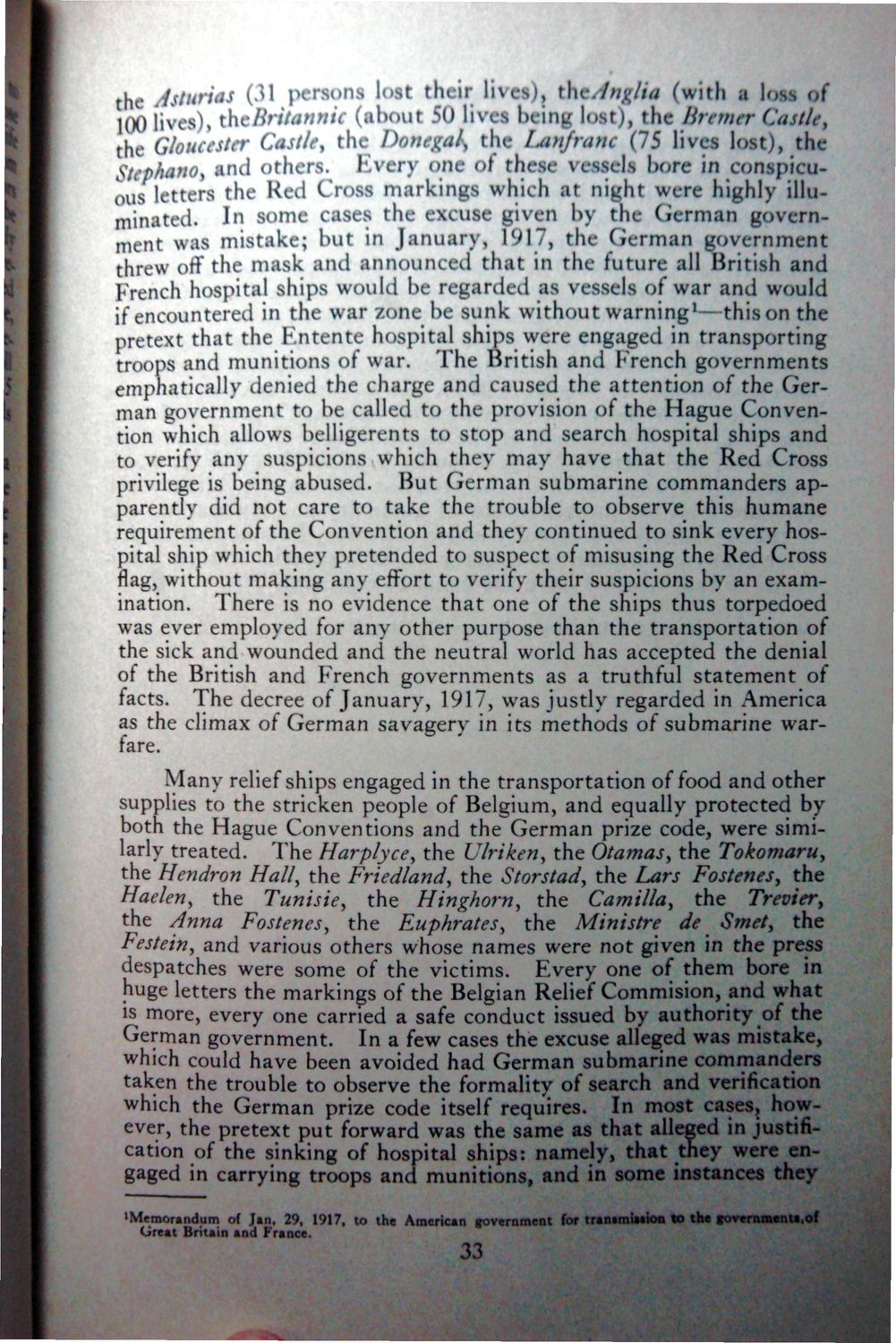| |
| |
Caption: War Publications - WWI Compilation 1923 - Article 14
This is a reduced-resolution page image for fast online browsing.

EXTRACTED TEXT FROM PAGE:
persons Xal> the Lanf\ StephanOy and others. Every one of these vessels bore in conspicuous letters the Red Cross markings which at night were highly illuminated. In some cases the excuse given by the German government was mistake; but in January, 1917, the German government threw off the mask and announced that in the future all British and French hospital ships would be regarded as vessels of war and would 1 if encountered in the war zone be sunk without warning —this on the pretext that the Entente hospital ships were engaged in transporting troops and munitions of war. The British and French governments emphatically denied the charge and caused the attention of the German government to be called to the provision of the Hague Convention which allows belligerents to stop and search hospital ships and to verify any suspicions which they may have that the Red Cross privilege is being abused. But German submarine commanders apparently did not care to take the trouble to observe this humane requirement of the Convention and they continued to sink every hospital ship which they pretended to suspect of misusing the Red Cross flag, without making any effort to verify their suspicions by an examination. There is no evidence that one of the ships thus torpedoed was ever employed for any other purpose than the transportation of the sick and wounded and the neutral world has accepted the denial of the British and French governments as a truthful statement of facts. The decree of January, 1917, was justly regarded in America as the climax of German savagery in its methods of submarine warfare. 100 f Many relief ships engaged in the transportation of food and other supplies to the stricken people of Belgium, and equally protected by both the Hague Conventions and the German prize code, were similarly treated. The Harplycey the Ulriken, the Otamas> the Tokomaru> the Hendron Ha//, the Fried/and, the Storstad, the Lars Fostenes, the Haelen, the Tunisie, the Hinghorn, the Camilla, the Trevier> the Anna Fostenes, the Euphratesy the Ministre de Smet> the Festein, and various others whose names were not given in the press despatches were some of the victims. Every one of them bore in huge letters the markings of the Belgian Relief Commision, and what is more, every one carried a safe conduct issued by authority of the German government. In a few cases the excuse alleged was mistake, which could have been avoided had German submarine commanders taken the trouble to observe the formality of search and verification which the German prize code itself requires- In most cases, however, the pretext put forward was the same as that alleged in justification of the sinking of hospital ships: namely, that they were engaged in carrying troops and munitions, and in some instances they lemorandum of Jan, 29, 1917, to the American government for trantmiation to the fovernmtntt Great Britain and France. 33
| |